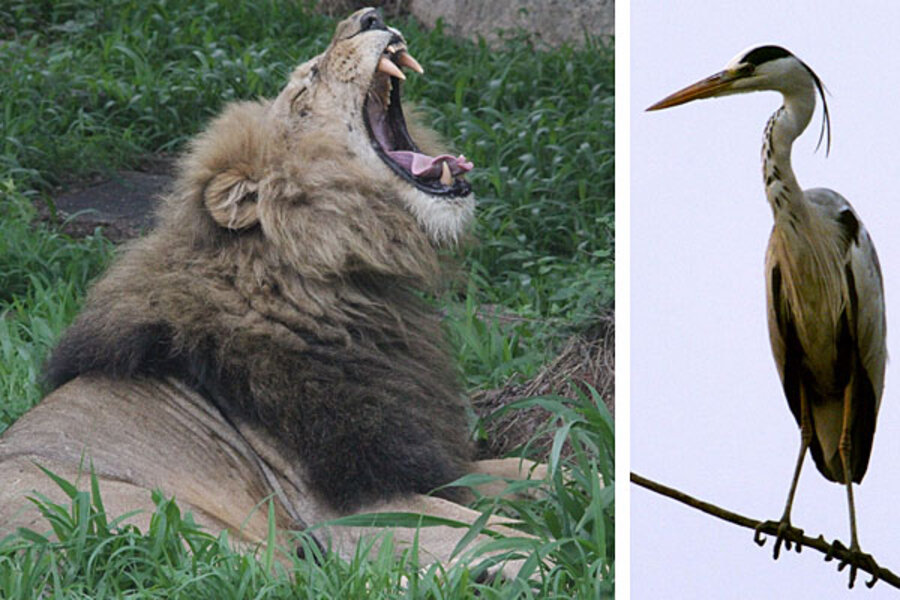Lion kills heron: A stork reminder of big cats' wild nature
Loading...
A video of four lions preying upon a heron at a Dutch zoo, shot last year and reposted on YouTube Wednesday, reminds us that you can take the lion out of the wild, but you can't take the wild out of the lion.
In the video, a blue heron at the Artis Royal Zoo wandered into a small pool while a group of four lions were basking in the sun, about 25 yards away.
As the the bird came into view of a lioness, instinct kicked in. The lioness darted toward the bird, which desperately attempted to take flight but was pulled from the air with a leaping snatch. The rest of her pride joined in to finish off the heron.
The footage of the killing has drawn thousands of views, because it's not often to see animals prey on one another at zoos. Experts said that, though the kings of the jungle are kept in captivity, cared and fed by humans, their original wildness remains untamed.
Earlier this month, an African lion broke out of its pen and killed a 24-year-old intern at the Cat Haven sanctuary in California who was cleaning the main enclosure. According to CNN, the 5-year-old, 350-pound killer was one of the victim's favorites.
Captive lions tend to act on their wild instincts whenever potential prey catches their eyes. A pair of videos titled "lion tries to eat baby" have attracted in total more than 7.6 millions views on YouTube since they were uploaded last April. The clips show an Oregon Zoo lioness snarling and baring her fangs in vain at a happily oblivious toddler protected by reinforced glass.
"Most of the time they seem relaxed and cuddly—so it's easy to forget that they react to meat with the reflexive instincts of a shark." Professor Craig Packer, a leading big cat expert at the University of Minnesota, noted in a recent interview with National Geographic News. "Ten years ago Roy Horne (of Siegfried and Roy) was attacked by a tiger that they had handled for years—these attacks happen when people forget about the shark inside."
Early this month, The Monitor's Gloria Goodale interviewed Zara McDonald, executive director of the Bay Area Felidae Conservation Fund regarding the death of the Seattle woman.
“Cats are predators,” said McDonald. "I don’t care how tame anyone thinks one might be, they are always a wild animal with the ability to hurt humans.”






